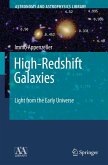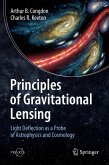This is the second edition of my book Galaxy Formation. Many people liked the rst edition which appeared in 1998, just before the explosion of magni cent new data which have completely changed the face of astrophysical cosmology. Many of the agonies which had to be gone through in the rst edition have disappeared and, to many people's amazement, including mine, there is now a concordance model for cosmology, the cosmologist's equivalent of the particle physicist's standard model. Just like the standard model, however, the concordance model creates as many problems as it solves. This is not a cause for concern, but rather one for celebration because we are now able to ask much better and deeper questions than in the past. These questions indicate clearly the need for physics and astrophysics 'Beyond the Concordance Model'. Theobjectofthisneweditionistobringthisamazingstoryup-to-date,verymuch inthespiritofthe rstedition.Torecapitulatesomeofthepointsmadeintheprevious prefaceabouttheoriginofthebook,IwasaskedbySpringer-Verlagtoexpandtheset of lecture notes that I prepared in 1988 for the First Astrophysics School organised by the European Astrophysics Doctoral Network into a full-length book. The set of notes was entitled Galaxy Formation and was published as a chapter of the volume Evolution of Galaxies: Astronomical Observations (eds. I. Appenzeller, H.J. Habing andP.Lena,pages1to93,Springer-VerlagBerlin,Heidelberg,1989).Inthatchapter, Iattemptedtobridgethegapbetweenelementarycosmologyandthetechnicalpapers appearing in the literature which can seem quite daunting on rst encounter. The objective was to present the physical ideas and key results as clearly as possible as an introduction and guide to the technical literature.
From the reviews of the first edition:
"This book is yet another example of the author's outstanding expository skills and deserves to be hailed as a brilliant and up-to-date account of current understanding in the field of cosmology and galaxy formation."
The Observatory, 1999
"...Despite its title, the book actually covers pretty much all of extragalactic astronomy and cosmology...offers one of the most comprehensive descriptions of the topic, in particular where observational data are concerned....Longair never fails to place the results within the big picture...Besides completeness, it is also the most up-to-date textbook. Even very recent developments are included....I very much enjoyed reading this book, and I am sure I will make use of it the next time I teach a cosmology graduate course, as both a textbook for the students and a guide in preparing my lectures."
Physics Today, September 1999
From the reviews of the second edition:
"This second edition of Longair's 1998 book is extensively revised and updated. It is a superb and extensive overview of the physics and evolution of the universe ... . Longair ... succeeds in his goal of writing at an appropriate level for upper-level undergraduates and beginning graduate students. He makes difficult material understandable by using clever analogies ... . The book is valuable both for academic coursework and as a reference source. Summing Up: Essential. Upper-division undergraduate through professional collections." (T. Barker, CHOICE, Vol. 45 (10), June, 2008)
"This book is yet another example of the author's outstanding expository skills and deserves to be hailed as a brilliant and up-to-date account of current understanding in the field of cosmology and galaxy formation."
The Observatory, 1999
"...Despite its title, the book actually covers pretty much all of extragalactic astronomy and cosmology...offers one of the most comprehensive descriptions of the topic, in particular where observational data are concerned....Longair never fails to place the results within the big picture...Besides completeness, it is also the most up-to-date textbook. Even very recent developments are included....I very much enjoyed reading this book, and I am sure I will make use of it the next time I teach a cosmology graduate course, as both a textbook for the students and a guide in preparing my lectures."
Physics Today, September 1999
From the reviews of the second edition:
"This second edition of Longair's 1998 book is extensively revised and updated. It is a superb and extensive overview of the physics and evolution of the universe ... . Longair ... succeeds in his goal of writing at an appropriate level for upper-level undergraduates and beginning graduate students. He makes difficult material understandable by using clever analogies ... . The book is valuable both for academic coursework and as a reference source. Summing Up: Essential. Upper-division undergraduate through professional collections." (T. Barker, CHOICE, Vol. 45 (10), June, 2008)
"The book is a good introduction to its many topics for those wanting to go further and a good summary for those for whom the almost eight-hundred pages are enough. Essentially everyone interested in any of the topics should have a copy of this book." (Phillip Helbig, The Observatory, Vol. 144 (1300), June, 2024)








